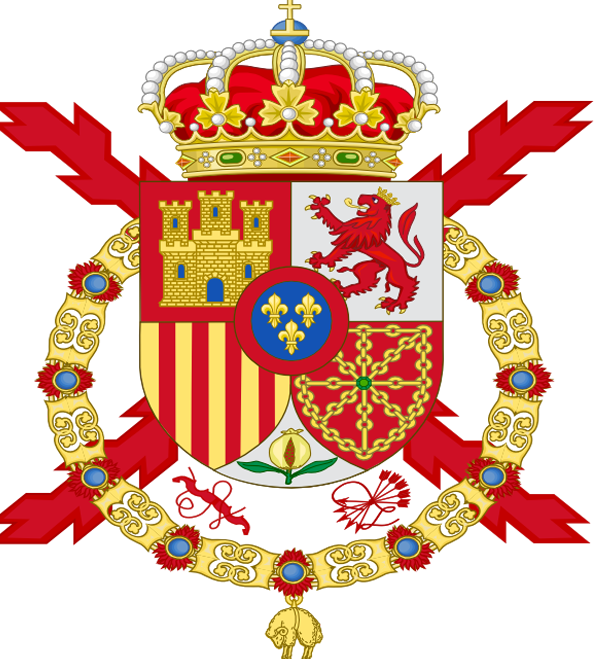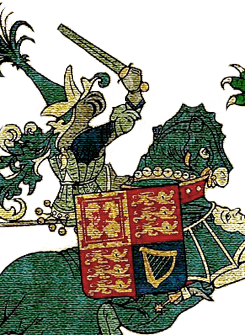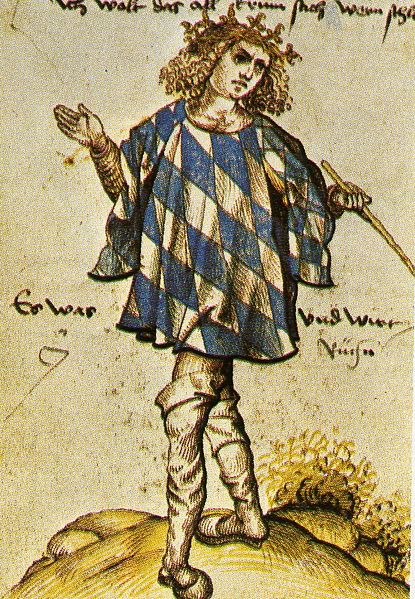Colleges of heralds grew up in the early 15th century, divided
along country lines.
As tournaments grew in popularity, heralds became the referees who
determined whether arms were legal and correct, who could fight whom
or at all, how different nobles were seated, and other matters of
etiquette. In England, there was a strict hierarchy even before there
were colleges, with the Earl Marshal, the King of Arms (the leader of
a kingdom's heralds, also known as the King of Heralds), the Herald of
Arms, and the Pursuivant of Arms.
14

During the heyday of heraldry, every formal piece of clothing
or equipment on the knight, his horse, his servants or his
wife and children had heraldic significance, but the most
important piece was his shield. This carried the basic coat of
arms.
The coveted inheritance of arms depended on a country's
evolution of land inheritance over the period of heraldry's
popularity.
Inheriting the arms also meant inheriting the family name, which
usually meant inheriting the land (if there was any). In the
countries with earlier and more elaborate heraldic systems (such
as France, Scotland and Ireland), inheritance was through a
legitimate male line. Women and non-combatants did not have
their own arms until late in the heraldic period.
In Spain, where standardized heraldry was introduced quite late
in the 16th century (though the use of heraldry stemmed from the
11th century),
the arms lacked the more elaborate accessories arms from the British
Isles.15 However, because inheritance could occur through female and
illegitimate lines, coats of arms could be handed down through a
wider variety of individuals, which would necessarily complicate
them. In addition, Spanish heraldry allowed words on a shield
itself, rather than on a banner on the shield, as was considered
proper elsewhere.
16

The coat of arms in heraldry was based on the fundamental
design of the shield.
Initially, the charges and other features on the coat of arms
were relatively simple because they had to be put on a real
shield.
The early monastic shields, banners and clothing of the military
religious orders are a good example of this. The Knights
Templar, founded in 1119 and suppressed in 1312, had two simple
designs. One was black-and-white, called "Piebald." It
symbolized the Templars' constant war with evil. The other was
white or brown/black (depending on whether the bearer was a
knight or a sergeant) with a simple red cross on the breast. The
Templars had taken the latter symbol from the uniform of the
First Crusade.
17
The cross was a very common symbol in medieval heraldry.
18
Later, as designs became more elaborate, the coat of arms would
include the helm, which now usually has a crest that can be quite
elaborate, and a banner.
The personal history of the bearer could be indicated by insigniae
of office, orders of chivalry, or markings indicating the person's
order of birth or even gender. Another development that has grown
more elaborate over time has been the "supporter," a figure on each
side that holds up the shield. Coat of arms have become more
stylized over time, the oldest and most powerful usually also
bearing the simplest designs and most potent charges. Though there
continue to be specific rules for the design of new coats of arms,
these can vary from country to country.


